Posts Tagged ‘Spiders’
{{start}}
I am a firm believer that when fishing rivers you have to get down to where the fish are holding and also that flies particularly in faster running water should include “hot spots”. Bead head spiders are an important part of my bead head ‘nymph’ fly box because that help satisfy both of those criteria. I like to fish them either on the point or first dropper and find that are a great adjunct to a second weighted fly or an unweighted nymph, wee wet or spider.
{{end}}
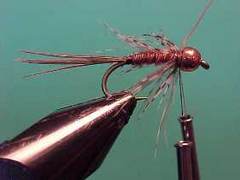
{{+1}}Hybrid spider nymph – Chatto’s original{{-1}}
{{start}}
This is more a class of flies rather than just one fly and is a hybrid of a spider fly and a bead head nymph with a tungsten bead up front. I carry 4 different hybrid spider nymphs in two sizes and find them particularly useful in situations where I need a bit of weight to get a fly down yet still want the anchor fly to fish well and be enticing to trout rather than just being an anchor for other flies in the team.{{end}}
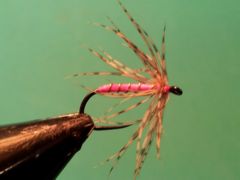
{{+1}}Partridge and pink spider{{-1}}
{{start}}
This is one of those flies that comes into its own on really bright days. The bright pink and the movement of the soft hackle in the water this fly often produce a hit. There is also the added benefit that they are so easy to tie. All river fly fishers should have a selection of English Spiders in their fly boxes.{{end}}
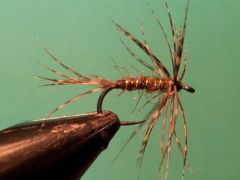
{{+1}}March brown spider{{-1}}
{{start}}
Where I fish, as the water warms up closer to lunch time your often find fish actively rising to March Brown Mayfly that are a mottled chocolate and dark grey in colour. I fish them in lakes to targeted rising fish, as a polaroiding fly and also as part of a loch style team and in river I find them a great swinging fly when fish are taking emergers just below the surface.{{end}}
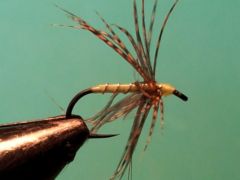
{{+1}}Partridge and chartreuse spider{{-1}}
{{start}}
Spiders are always a good option in rivers and whilst my "goto" spider is a partridge and orange the chartreuse version is always worth having on hand as an alternative. I don't know what the trigger but from time to time trout switch onto chartreuse coloured flies and if you don't have one in your kit your likely to fall behind or even worse, skunk the session.{{end}}
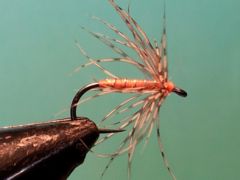
{{+1}}Partridge and orange spider{{-1}}
{{start}}
This is undoubtedly my "go to" spider. Fish all over the world seem to find orange a trigger colour and along with the buggy shape, the movement of the soft hackle in the water this fly often produce a hit. There is also the added benefit that they are so easy to tie. All river fly fishers should have a selection of English Spiders in their fly boxes.{{end}}
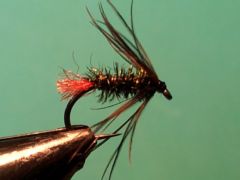
{{+1}}Red tag spider{{-1}}
{{start}}
This fly whilst being very different to a sparsely dressed north country spider has proven itself as a prolific fish catcher and has earned a place in my nymph fly box. I have no hesitation in tying it on either in combination with a traditional spider, a bead head nymph or heaven forbid a bead head version of a north country spider.{{end}}
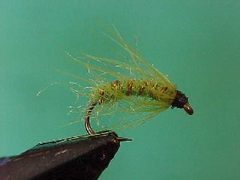
{{+1}}Fuzzy spiders – Chatto’s original{{-1}}
{{start}}
There is almost no limit to the combinations that you can come up with and these are the ones that I regularly fish and you may like to try. I don't know if fish pick them up as emerging insects but they do fish well when fish have emergers on the menu.{{end}}
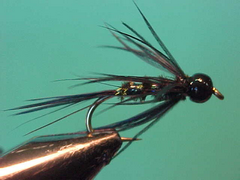
{{+1}}TBH dark magic – Chatto’s original{{-1}}
{{start}}
Hybrid spider nymphs are good buggy looking flies and the tail and soft hackle provide plenty of movement. One of these hybrid spider nymphs on the top dropper and two unweighted spiders or nymphs below can be a real tease for trout.{{end}}
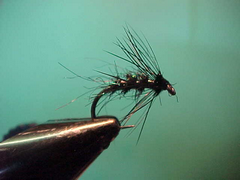
{{+1}}Dark magic – Chatto original{{-1}}
{{start}}
As long as there is a flow in a river to work a fly then English Spiders are an option. Particularly if you want to target educated fish in clear slower water. They land softly and are suggestive little flies. The combination of the buggy shape, the movement of the soft hackle often produce a hit.{{end}}

{{+1}}English spiders{{-1}}
{{start}}
As long as there is a flow in a river to work a fly then English Spiders are an option. Particularly if you want to target educated fish in clear slower water. They land softly and are suggestive little flies. The combination of the buggy shape, the movement of the soft hackle often produce a hit.{{end}}













